There are over 200 recognised breeds of chicken around the World but not all hens are equal in their laying ability so if you would like chickens for eggs, look at my top 10 laying hens below first. It is commonly accepted that all chickens decended from the Jungle Fowl. Pure breeds of chicken have been developed over many hundreds, even thousands of years from the Jungle Fowl (although science is still challenged by the Auraucana that lays blue eggs).
A Little History of Laying Hens
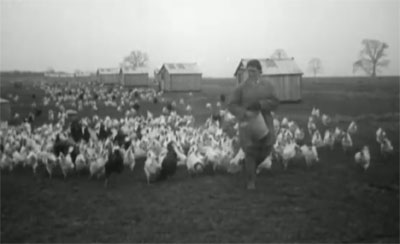 Before the First World War, ducks were the better egg layers and chicken breeds that layed 100 eggs or more per year were considered good layers. Most of the development of pure bred laying hens came after the Second World War when there were many laying trials and tests and it was common for breeders to ‘trap nest’ hens to record their individual output so that they could be used to produce further generations of laying hens.
Before the First World War, ducks were the better egg layers and chicken breeds that layed 100 eggs or more per year were considered good layers. Most of the development of pure bred laying hens came after the Second World War when there were many laying trials and tests and it was common for breeders to ‘trap nest’ hens to record their individual output so that they could be used to produce further generations of laying hens.
Development of the ‘Hybrid’
The developments with pure breeds were soon to be followed by hybrid (a cross of pure breeds) laying hens. There were millions of pounds spent during the 1950’s on creating hybrids that were not only capable of laying more eggs but also had a good feed conversion.
During this development, the parent flocks that created these hybrid layers were becoming a different ‘strain’ of their own because hens were selected for egg production rather than the way they looked.
Interestingly, duck eggs could have been on our breakfast table rather than chickens eggs… but they did not do well kept in confined conditions like chickens.
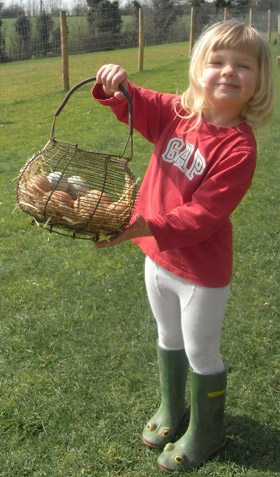 My Top 10 Chickens for Eggs
My Top 10 Chickens for Eggs
The following table lists my top 10 laying hens (a mixture of hybrids and pure breeds) and gives an estimate of the number of eggs they are capable of producing if kept in the right conditions.
Note that there are many different strains of hens from different breeders that will perform differently… egg numbers can vary on a number of other factors too, particularly with feeding and daylight levels.
Exhibition strains that have been closely bred are not usually selected for their egg laying performance. Try to purchase hens from a good ‘Utility Strain’. There are some breeders that advertise utility strains and the number of eggs they expect from their strain every year.
Hybrids are much more reliable at producing a given number of eggs and are bred mainly for this purpose.
1. Goldline (Hybrid)
The ultimate egg machine. This little commercial brown hen will lay up to 320 large brown eggs in her first year. They have a good feed ratio and are very similar to the birds used on farms to produce eggs for the consumer market. A very friendly bird that will be in your house if the door is left open!
2. White Leghorn (Pure Breed)
Small attractive birds with a good feed efficiency that lay up to 300 large white eggs in their first year. These are the standard commercial hen used in the U.S. for egg production (because white eggs are preferred). They can be quite flighty and can fly well so make sure they can be kept securely before you buy them or clip a wing to keep them on the ground.
3. Nera (Hybrid)
Hardy birds that are great foragers and layers of a good quality large brown egg. The Nera is a cross between a certain strains of Rhode Island Red and Barred Plymouth Rock, originating in Scotland. You can expect around 270 eggs in their first year.
4. Amber (Hybrid)
The Amber is a Rhode Island Red based hybrid that looks attractive and has very soft feathering. She is a fantastic layer of up to 300 medium eggs in her first year.
5. Speckledy (Hybrid)
The Speckledy is a flecked dark hen, a cross of a Rhode Island Red and Marans. She lays around 270 large dark brown eggs in her first year.
6. Rhode Island Red (Pure Breed)
The Rhode Island Red is a good layer of up to 220 large brown eggs in their first year. Be sure to get a utility strain though as these are a popular show bird.
7. Marans (Pure Breed)
Good layers of medium to large dark brown eggs. Copper Black Marans seem to be the best layers laying up to 200 eggs in a year. They are often good winter layers, with pullets coming into lay during January.
8. Light Sussex (Pure Breed)
Attractive birds that will reward you with up to 200 medium tinted eggs.
9. Araucana (Pure Breed)
Araucanas are very unique looking. They initially came from Chile in South America. The Araucana lays around 200 medium sized blue to bluish-green
10. Crested Cream Legbar (Pure Breed)
An attractive hen with a small crest that will lay up to 180 medium sized blue to bluish-green eggs that will add a little colour to your egg boxes.

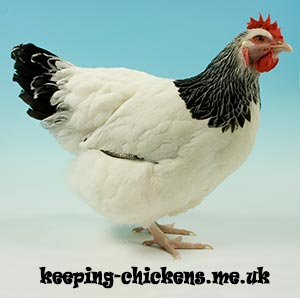

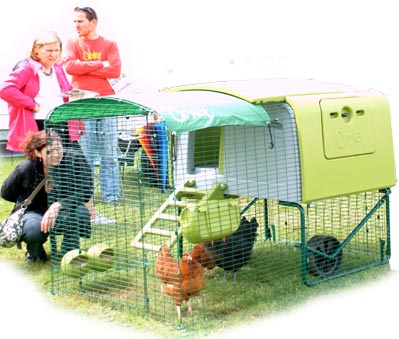
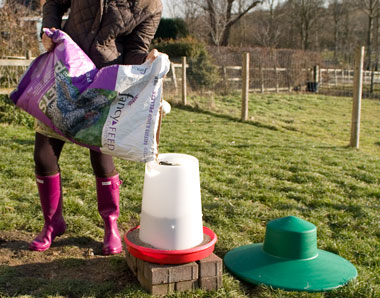

I’m completely new to owning chickens but really want to do so and want to make the right decision on breeds before purchasing is it ik to own a single chicken? Or would I definitely need more than one? What breed is a good egg layer but also very friendly I.e could potentially be good with children as I wish to involve my son in the chickens care. Thanks x
Chickens are flock animals and shouldn’t be kept on their own. 3 is usually a good number as this provides the average family with enough eggs and you have a spare if one dies to keep the other company.
Hi
I have an issue with my two and a half year old Goldline Chickens. They are now very infrequent layers. Can you advise.
Thanks
This is a hybrid that was produced to lay 300+ eggs in a year – the normal sort of hen you’ll find in a commercial set up.
The down side is that their genetics are tipped towards producing as many eggs as possible in the first couple of years, after which commercially they are ‘spent hens’. Pure breeds lay less but for longer.
If their diet is right and you don’t suspect red mite in the coop or sickness and they are 2+ years old, I think it’s probably time to retire them off. Perhaps you could add a few new hens to make up your egg numbers?
Hi. A relative newbie to keeping chickens, and today I think I am losing my mind. I have 3 chickens that are kept in an Eglu. Most days, I get 2 or 3 eggs. Today, I have found 5, 3 in their nesting box, and two outside their house on their wood chips. Either they are being super efficient, or is it possible they have been laying on the wood chips on a different day and I didn’t notice them? Occasionally, I have seen them impatiently queuing to use the nesting box when one of the other ladies has been taking her time. They are very efficient at digging through the wood chips to make big piles, so maybe these two extra eggs were buried. Yesterday I used ground sanitising powder on the wood chips, so am I right in thinking it is best to bin these eggs given the porous nature of the shells?
Chickens can normally only lay one egg every day. Very occasionally, I’ve heard of high production hybrids such as Goldlines managing a second one late in the day, but I can’t be sure this is true.
I would say they laid them outside on other days and you didn’t spot them 😉
I have a bantam and a hybrid which I have had since April. The bantam started laying and then went broody, but has now stopped being broody but hasnt started laying again yet. Do you know why?
Also, we wanted to introduce some silkie chicks which we have in a separate shed at the moment until they are a bit older, but I was wondering what would be the best way to introduce them?
Thanks, Lucy
Hi Lucy,
Hens will stop laying when they are broody – the longer it goes on for, the longer they take to start laying again.
There is guidance for introducing new hens here: http://poultrykeeper.com/general-chickens/introducing-new-chickens
How many months before white leghorn laying eggs and how long she gonna laying eggs or months.
Chickens generally come into lay between 19-24 weeks of age. Leghorns usually start around 19-21 weeks, it’s the larger / slower growing breeds that can take 24 even 25 weeks such as Orpingtons.